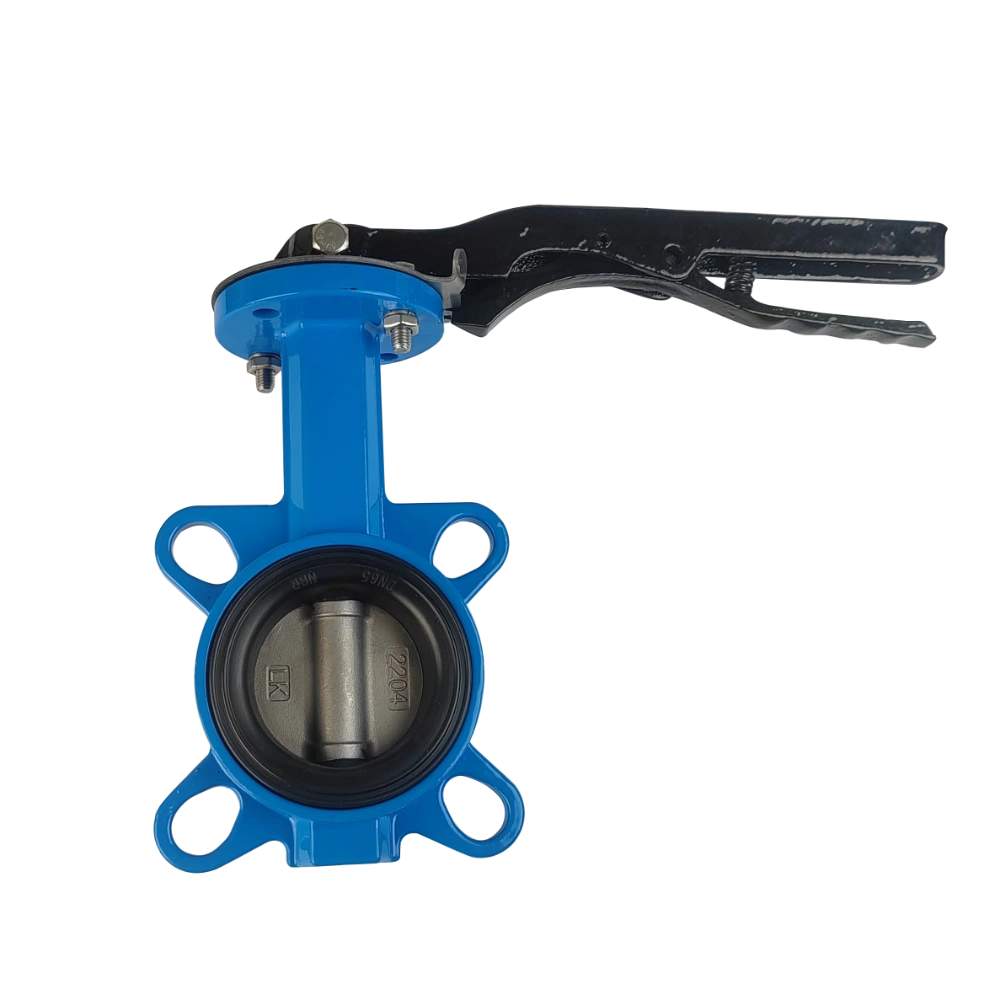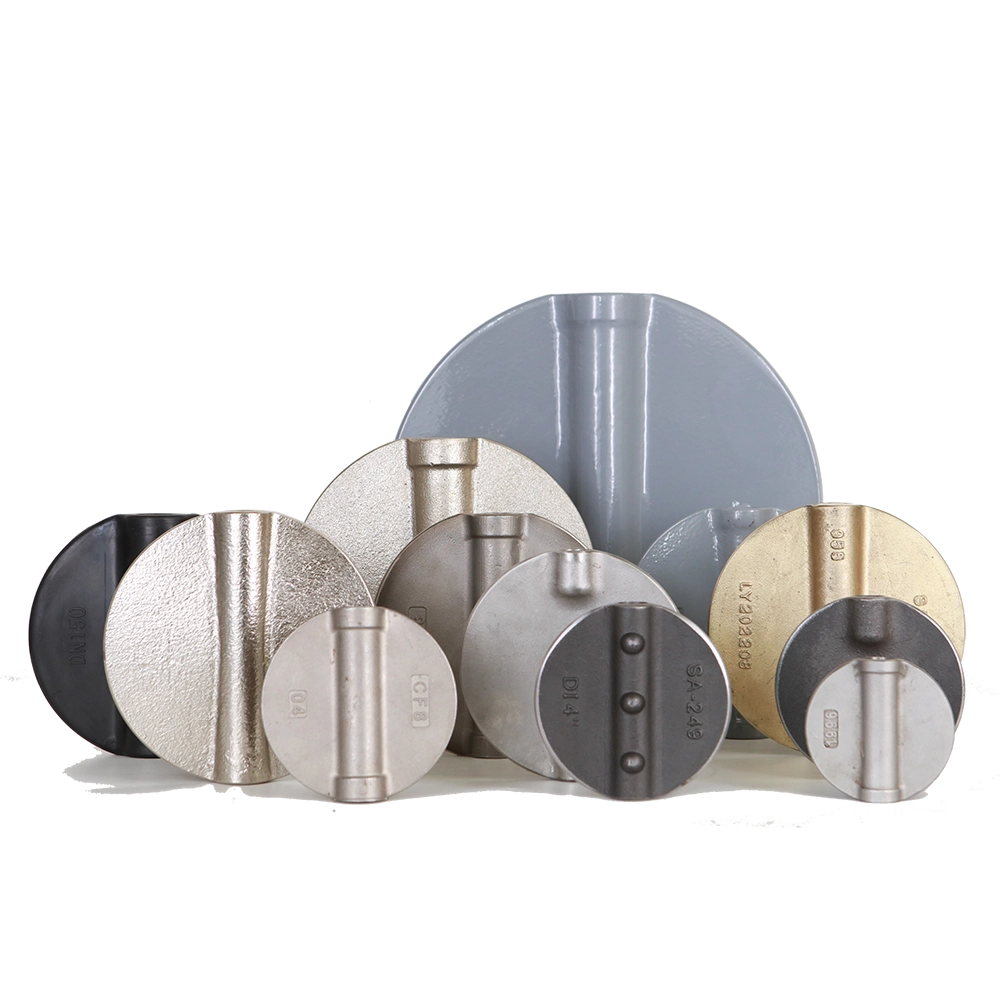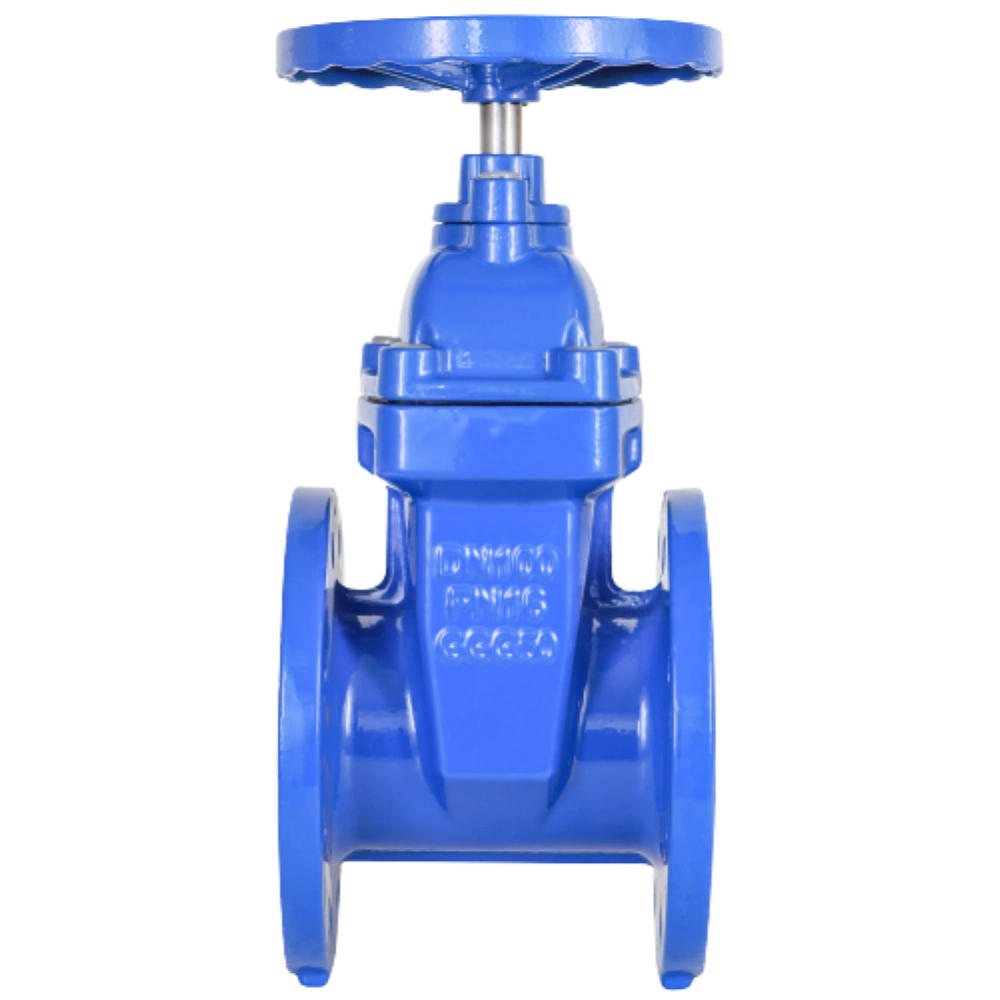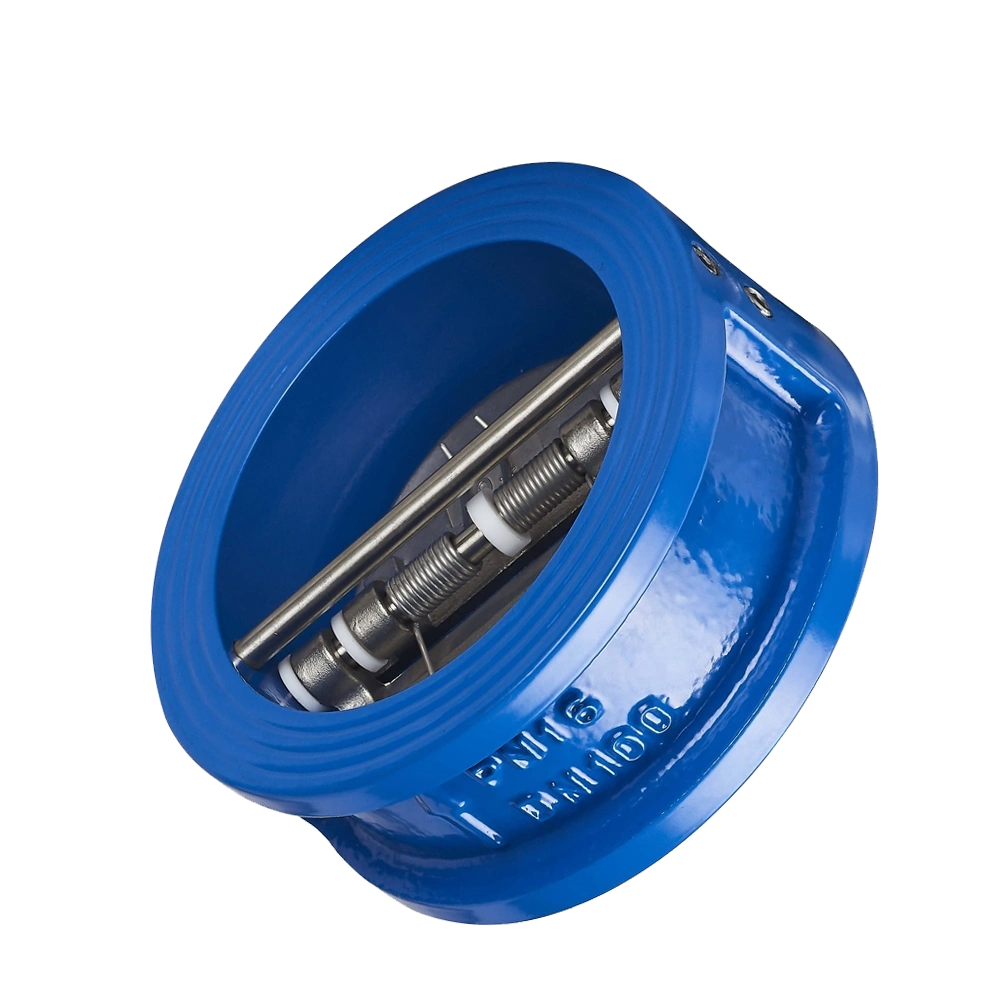A fully lined butterfly valve is a specialized industrial valve used to regulate or isolate fluid flow. Especially in applications involving corrosive, abrasive, or otherwise challenging media.
Unlike standard butterfly valves, which may only have a resilient seat or a partial lining, a fully lined butterfly valve has a complete lining that covers the interior of all wetted surfaces – that is, the portion of the valve that comes in contact with the process fluid. This lining is typically made from materials such as polytetrafluoroethylene (PTFE), which has excellent resistance to chemical attack and extreme temperatures, or ethylene propylene diene monomer (EPDM), which is best in class for wear resistance and elasticity. The purpose of this fully lined design is to protect the metal components of the valve (usually made of ductile iron, cast iron, or stainless steel) from corrosion, extend the life of the valve, and ensure reliable performance in harsh environments.
The term “fully lined” distinguishes these valves from partially lined or unlined versions. In partially lined valves, only certain components (such as the seat or disc) may be coated, while other metal surfaces are exposed to the fluid. In contrast, fully lined valves ensure that no metal parts are in direct contact with the process media, providing maximum protection against corrosion and contamination.
In this article, we will explore the features, benefits, and applications of two specific types of fully lined butterfly valves: one fully lined with PTFE and the other fully lined with EPDM. We will examine their material properties, performance differences, and suitability for various industrial scenarios to gain a comprehensive understanding of the functions of these valves and why they are selected.
—
1. What is a PTFE fully lined butterfly valve?
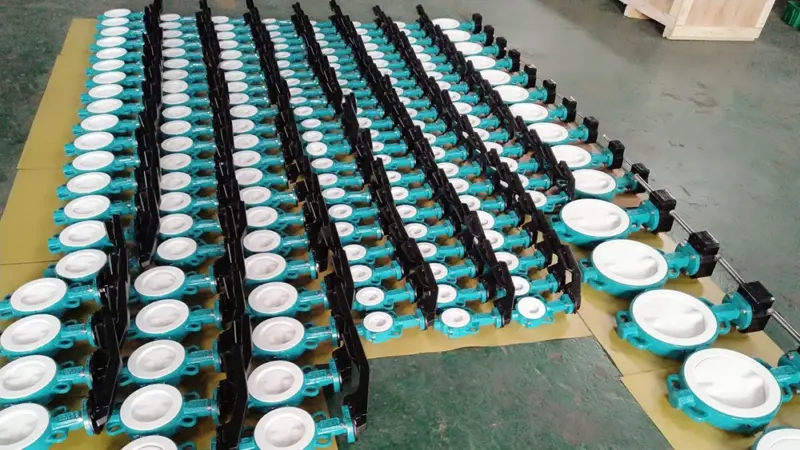
PTFE, or polytetrafluoroethylene, is a synthetic fluoropolymer known for its excellent chemical inertness, low friction, and high temperature resistance. All internal wetted surfaces (body and disc) of a PTFE fully lined butterfly valve are coated or encapsulated with a layer of PTFE.
1.1 Material properties of PTFE
PTFE is an extremely durable material with a unique combination of properties:
1.1.1 Chemical resistance
PTFE is virtually unreactive to most chemicals. These include strong acids (e.g. sulfuric acid, hydrochloric acid), bases (e.g. sodium hydroxide), and organic solvents.
NOTE: Molten alkali metals and certain fluorides at high temperatures can degrade them.
1.1.2 Temperature Range
PTFE can operate continuously at temperatures up to 180°C (365°F), with a maximum short-term tolerance of about 290–320°C (554–608°F). Its lower limit extends to cryogenic levels, about -10°C.
1.1.3 Low Friction
PTFE has a coefficient of friction as low as 0.02–0.10, providing a smooth, non-stick surface that reduces wear on moving parts. More importantly, it prevents the media from adhering to the valve.
1.1.4 Non-reactivity
PTFE does not absorb water or gases, ensuring that it remains stable and uncontaminated in humid environments.
1.2 Design and Construction
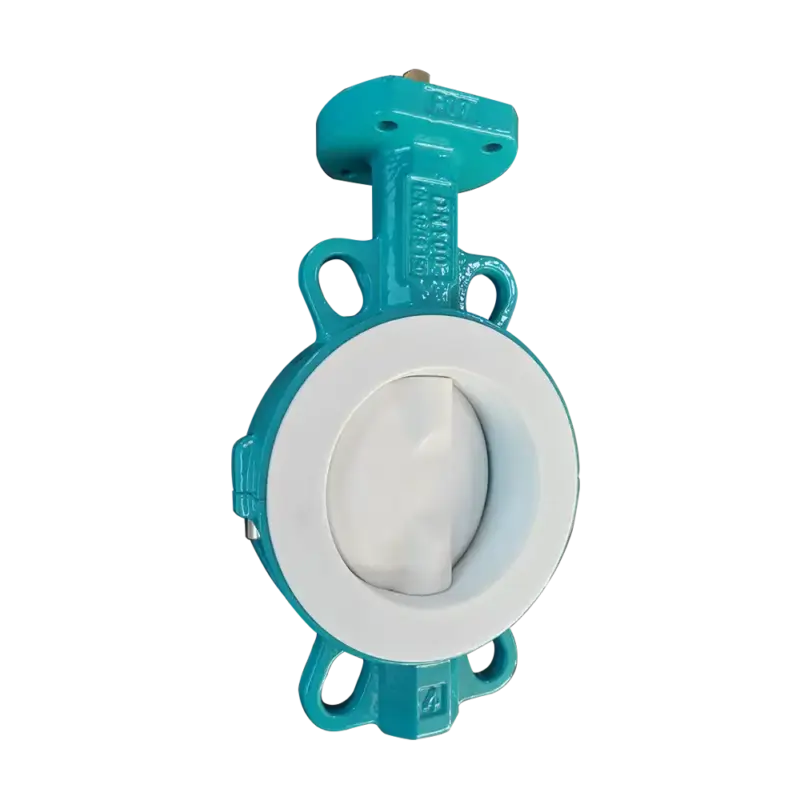
In a PTFE fully lined butterfly valve, the valve body is typically made of a strong, cost-effective metal such as ductile iron or cast steel, and then lined with PTFE. The valve disc is also fully encapsulated in PTFE.
Depending on the piping system requirements, the valve can be configured in a variety of styles, such as wafer-type, lug-type, or double flange-type.
The actuator can be manually operated using a lever or gear, or automatically operated using a pneumatic or electric actuator for precise control.
1.3 Advantages of PTFE fully lined butterfly valves
1.3.1 Excellent corrosion resistance
The PTFE lining protects the valve from highly corrosive media and is ideal for handling acids, alkalis, and other corrosive chemicals.
1.3.2 High temperature resistance
Its high temperature resistance makes it suitable for processes with hot fluids or gases from -10 degrees to 180 degrees.
1.3.3 Durability
PTFE’s low friction reduces wear and degradation, extending the life of the valve.
1.3.4 Zero Leakage
Fully lined PTFE butterfly valves can achieve zero leakage.
1.3.5 Versatility
PTFE’s wide compatibility allows it to be used in multiple industries from chemical plants to pharmaceutical manufacturing.
1.4 Applications
PTFE fully lined butterfly valves are widely used in environments where corrosion resistance and high purity are critical:
– Chemical processing: handling acids, solvents, and corrosive substances in pipelines and storage systems.
– Petrochemical industry: managing corrosive hydrocarbons and refining byproducts.
– Pharmaceuticals: ensuring the contamination-free flow of sterile or reactive fluids.
– Pulp and paper: controlling corrosive bleach and pulp raw materials.
– Food and beverage: handling acidic or high-purity liquids that require non-reactive materials.
1.5 Limitations
– Cost: PTFE is more expensive than many other lining materials, increasing the overall cost of the valve.
– Torque: PTFE is relatively soft and less elastic than rubber-based materials, so the torque will be 30% greater than rubber.
– Pressure limitation: ZFA recommends not to use in systems with PN>10.
—
2. What is an EPDM fully lined butterfly valve?
EPDM is a synthetic rubber known for its excellent elasticity, flexibility and resistance to environmental factors. EPDM fully lined butterfly valves have a complete EPDM rubber lining covering the valve body and disc, similar to their PTFE counterparts.
2.1 Material properties of EPDM
EPDM is a versatile elastomer with the following properties:
2.2.1 Chemical resistance
EPDM has good resistance to water, steam, dilute acids, alkalis, ketones, alcohols and polar compounds. However, it is not suitable for use with petroleum-based oils, hydrocarbon solvents or chlorinated hydrocarbons.
2.2.2 Temperature Range
EPDM generally operates between -10°C (-50°F) and 110°C (230°F), with some formulations able to withstand temperatures up to 130°C (266°F) for extended periods. It performs on par with PTFE in cold conditions, but is not as heat resistant as PTFE.
2.2.3 Resilience and Durability
EPDM has the flexibility of rubber and maintains a tight seal even after repeated opening and closing cycles. It is also resistant to tearing and abrasion.
2.3 Design and Construction
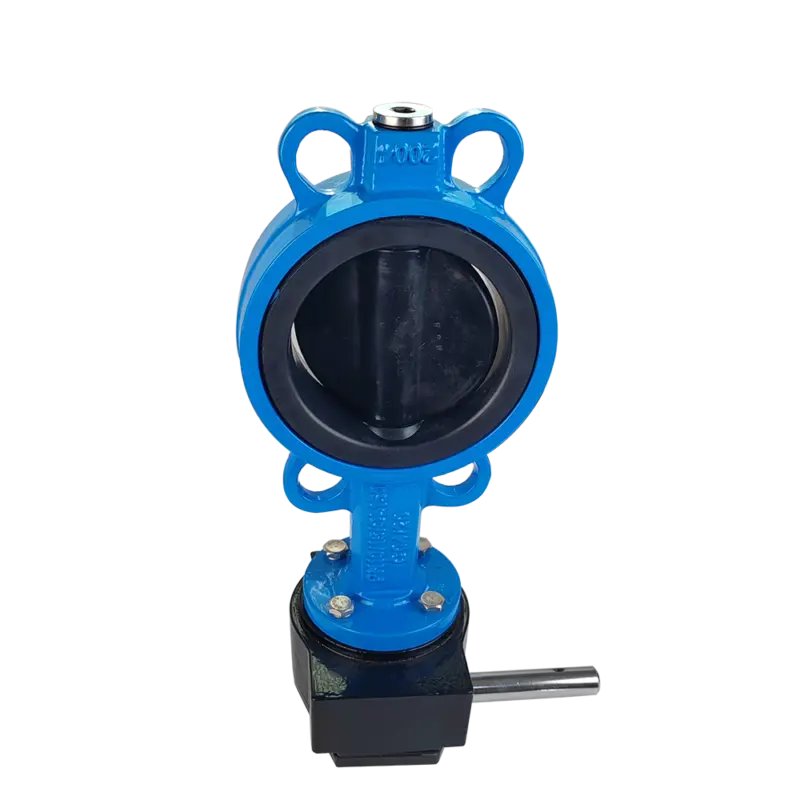
In an EPDM fully lined butterfly valve, the metal body (usually ductile iron or cast iron) is coated with a layer of EPDM rubber. The disc can be completely encapsulated in EPDM or made of stainless steel with an EPDM coating. The lining extends to all wetted surfaces to isolate the metal parts from the fluid.
Like PTFE-lined valves, EPDM-lined valves are available in wafer, lug, or flange configurations and can be operated manually or with an actuator. The rubber lining is usually thicker than PTFE (e.g., 5-10 mm), taking advantage of the elasticity of EPDM to enhance sealing and durability.
2.4 Advantages of EPDM Fully Lined Butterfly Valve
– Cost-effectiveness: EPDM is much cheaper than PTFE, and it is obviously more economical to choose EPDM fully lined butterfly valves for the same application.
– Flexibility: The elasticity of EPDM ensures excellent sealing performance, even under varying pressures or temperatures.
– Environmental resistance: Its resistance to ozone, UV, and weathering makes it an ideal choice for outdoor or exposed systems.
– Wide applicability: EPDM’s compatibility with water and mild chemicals makes it suitable for a variety of general purposes.
– Durability: The rubber lining can withstand mechanical stress and repeated movement, and has a long service life under moderate conditions.
2.5 Applications
EPDM fully lined butterfly valves are often used in less corrosive environments than PTFE lined valves:
– Water treatment: managing clean, treated or chlorinated water in municipal and industrial systems.
– HVAC systems: controlling hot and cold water flow in heating and cooling applications.
– Food and beverage: handling water-based or slightly acidic fluids where sanitation is important.
– Irrigation: regulating water flow in agricultural systems exposed to sunlight and weather.
– General industrial: handling dilute acids, bases or polar compounds at low to moderate temperatures.
2.6 Limitations
EPDM has some limitations that restrict its use in certain situations:
– Chemical compatibility: it is not resistant to oils, fuels or strong hydrocarbons, limiting its use in petrochemical or oil-related applications.
– Temperature limitations: EPDM does not handle high temperatures as effectively as PTFE and is therefore not suitable for hot, corrosive media.
– Aging: Over time, EPDM may degrade under extreme conditions, such as prolonged exposure to high temperatures or certain chemicals, shortening its service life compared to PTFE.
—
3. Comparison of PTFE and EPDM Fully Lined Butterfly Valves
While both PTFE and EPDM Fully Lined Butterfly Valves are used to protect metal parts from corrosive media, their material properties differ, resulting in different performance characteristics and application suitability. Here is a detailed comparison:
3.1. Chemical Resistance
– PTFE: Has near-universal chemical resistance, making it a top choice for highly corrosive fluids such as strong acids, bases, and solvents. It excels in environments where the media would quickly degrade other materials.
– EPDM: Has good resistance to water, steam, and mild chemicals, but fails in the presence of oils, hydrocarbons, or chlorinated solvents. Its chemical compatibility is narrower than PTFE.
3.2. Temperature resistance
– PTFE: PTFE has a relatively wider operating range (-10°C to 180°C).
– EPDM: Limited to -10°C to 80°C (or 130°C in some cases).
3.3. Mechanical properties
– PTFE: PTFE is durable and chemically inert, but is less elastic and more rigid, and can easily deform under high pressure or frequent cycling unless reinforced (e.g. with fiberglass).
– EPDM: Its rubber elasticity provides excellent sealing and resilience, making it more tolerant in applications with pressure fluctuations or repeated operations.
3.4. Cost
– PTFE: Due to the material’s premium properties and complex manufacturing process, it is more expensive, resulting in a higher upfront cost for the valve.
– EPDM: As a cost-effective option, EPDM-lined valves are more affordable and provide a practical solution for less demanding applications.
3.5. Applications
– PTFE: Best suited for harsh, corrosive or high temperature environments, such as chemical plants, refineries and pharmaceutical production.
– EPDM: Suitable for water-based, outdoor or mild chemical applications, such as water treatment, HVAC and irrigation systems.
—
4. Choosing between PTFE and EPDM fully lined butterfly valves
Choosing the right fully lined butterfly valve depends on the specific requirements of the application:
– Media type: If the fluid is highly corrosive (e.g. acid, solvent), PTFE is a better choice. For water, steam or mild chemicals, EPDM is sufficient.
– Temperature: PTFE is required for temperatures above 80 and below 120.
– Pressure: PTFE-lined butterfly valves can only withstand PN≤10, but the elasticity of EPDM may have a slight advantage under fluctuating conditions because its pressure resistance can reach PN≤16. (Small diameters can even reach PN≤25).
– Budget: EPDM offers a cost-effective solution for less corrosive applications, while PTFE justifies its higher cost in critical corrosive environments.
– Environmental considerations: Outdoor systems exposed to weather benefit from EPDM’s UV resistance, while indoor chemical processes favor PTFE’s inertness.

